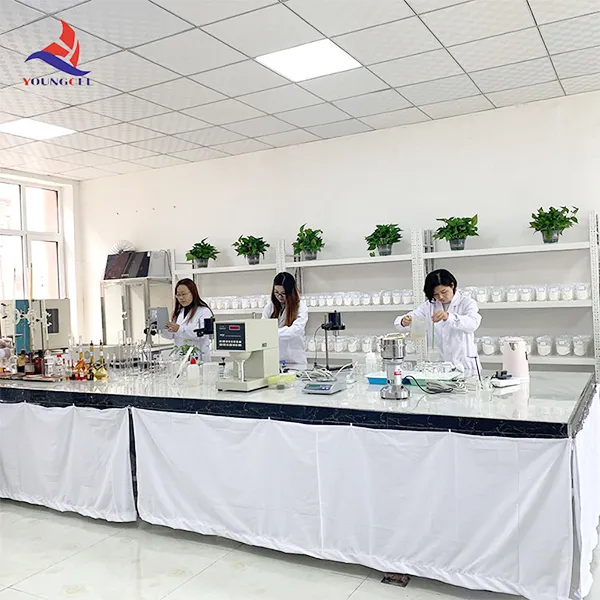The HPMC Manufacturing Plant A Cornerstone of Modern Industry
The Hydroxypropyl Methylcellulose (HPMC) manufacturing plant represents a pivotal element in various industries, including pharmaceuticals, construction, and food processing. HPMC is a versatile polymer derived from cellulose, and its unique properties make it indispensable in today's manufacturing landscape. This article delves into the significance of HPMC, the operational dynamics of manufacturing plants, and their contributions to technological advancements.
Understanding HPMC
HPMC is a cellulose ether that exhibits excellent film-forming, thickening, and stabilizing properties. Its chemical structure allows it to dissolve in water, making it a preferred choice in applications that require consistency and stability. In the pharmaceutical industry, HPMC is commonly used as a binder in tablet formulations and as a controlled-release agent. In construction, it serves as a thickener in mortars and a water-retention agent in cement mixtures. The food industry utilizes HPMC as an emulsifier and stabilizer, enhancing the texture and shelf-life of products.
The Importance of HPMC Manufacturing Plants
HPMC manufacturing plants are essential to meet the growing demand for this compound across various sectors. These facilities are equipped with advanced technologies and processes that ensure high-quality production. The production of HPMC involves several key steps, including sourcing raw materials, chemical modification of cellulose, and the drying and granulation of the final product.
One of the primary advantages of modern HPMC manufacturing plants is their efficiency. Automated systems and robotics streamline production processes, reducing the likelihood of human error and minimizing production time. Moreover, these plants are designed with strict adherence to safety and environmental standards, ensuring that the manufacturing process is both safe for workers and sustainable for the environment.
Technological Innovations in HPMC Production
hpmc manufacturing plant

As industries evolve, so too do the methods of HPMC production. The integration of cutting-edge technologies such as artificial intelligence (AI) and data analytics into manufacturing processes has led to significant improvements in productivity and quality control. For instance, AI algorithms can analyze production data in real-time, allowing plants to optimize conditions and detect potential issues before they escalate into serious problems.
Additionally, bio-based raw materials are gaining traction as a sustainable alternative for HPMC production. Utilizing renewable resources reduces environmental impact and aligns with global sustainability goals. Research institutions and manufacturing plants are collaborating to develop processes that minimize waste and energy consumption, further enhancing the ecological footprint of HPMC production.
Challenges and Future Prospects
Despite its numerous advantages, the HPMC manufacturing sector faces challenges, including fluctuating raw material prices and increasing regulatory requirements. The need for continuous investment in research and development is crucial to address these issues. As manufacturers strive to innovate and improve efficiency, they must also consider the sustainable practices that will shape the future of the industry.
Looking ahead, the demand for HPMC is projected to grow, driven by advancements in pharmaceuticals, a booming construction industry, and evolving food processing needs. HPMC manufacturing plants are well-positioned to play a significant role in meeting this demand while maintaining high standards of quality and sustainability.
Conclusion
In summary, HPMC manufacturing plants are vital components of modern industry, providing essential materials that enhance the quality of various products. As technology continues to evolve and the focus on sustainability increases, these plants will adapt to meet new challenges and opportunities. Their ongoing innovations and commitment to quality and safety will ensure their place at the forefront of industrial advancements, driving progress across multiple sectors for years to come.
-
Premium Detergent Grade HPMC Hydroxypropyl Methylcellulose: Superior Thickening & StabilityNewsAug.31,2025
-
HEC 100000 Hydroxyethylcellulose for Paint | Superior ThickeningNewsAug.30,2025
-
Wall Putty Rdp Powder Packaging DesignNewsAug.29,2025
-
Introduction to Hpmc Hydroxypropyl Methyl CellulosNewsAug.29,2025
-
Hpmc Industri Grade IntegrationNewsAug.29,2025
-
How to Choose the Right Construction AdhesiveNewsAug.29,2025




